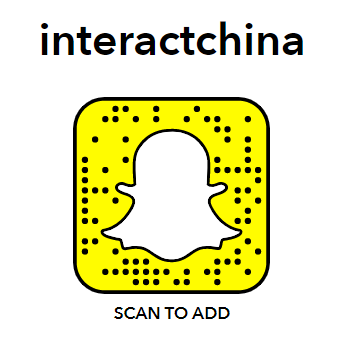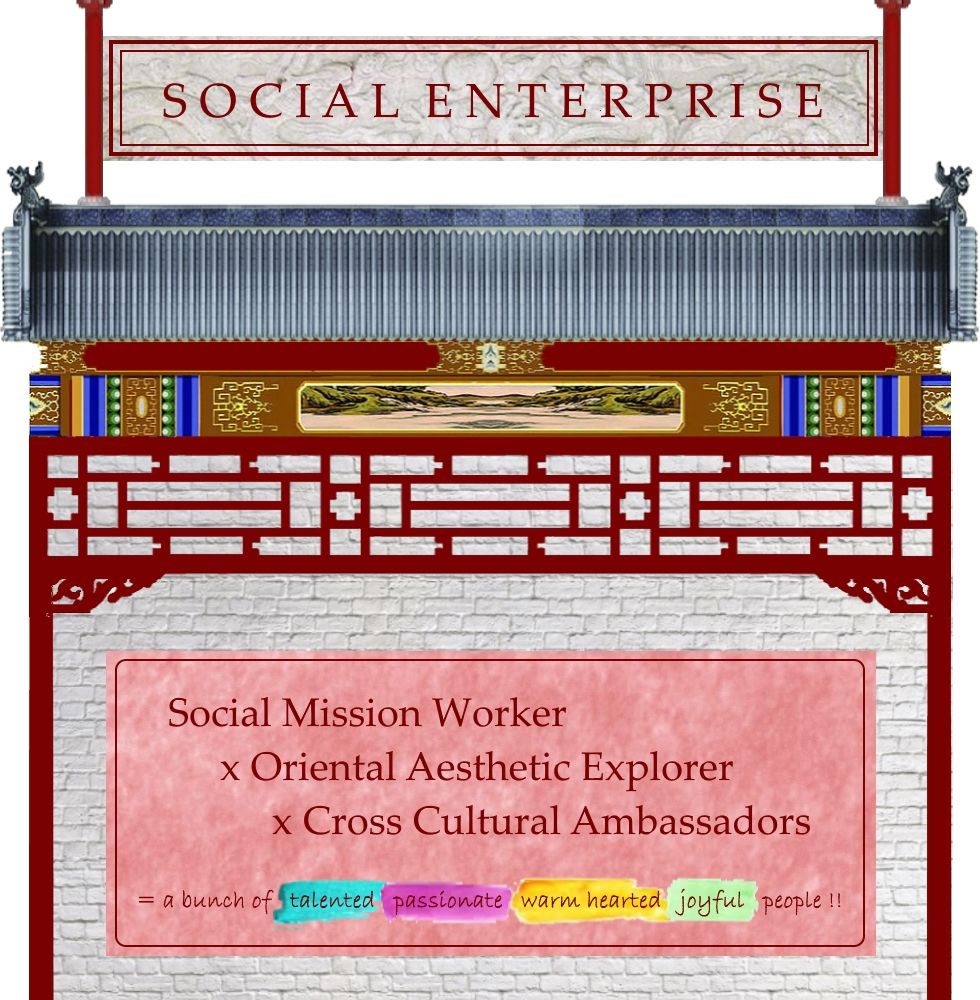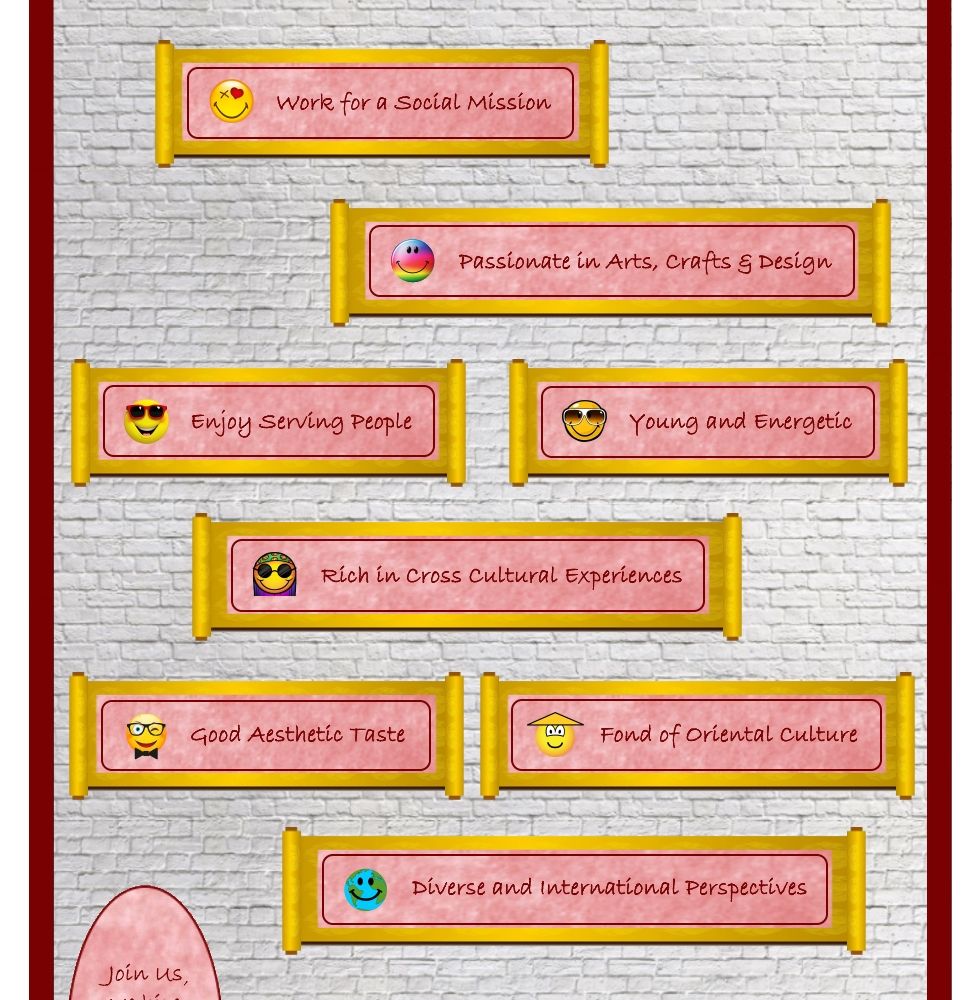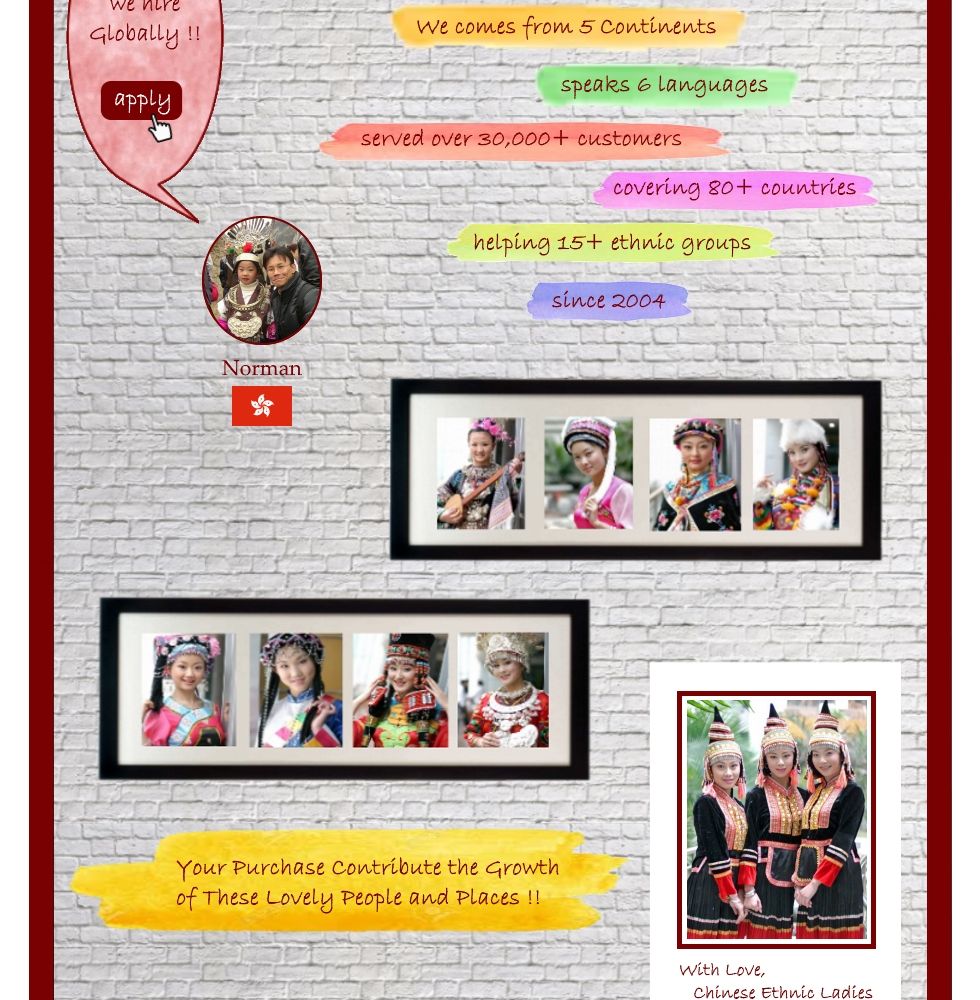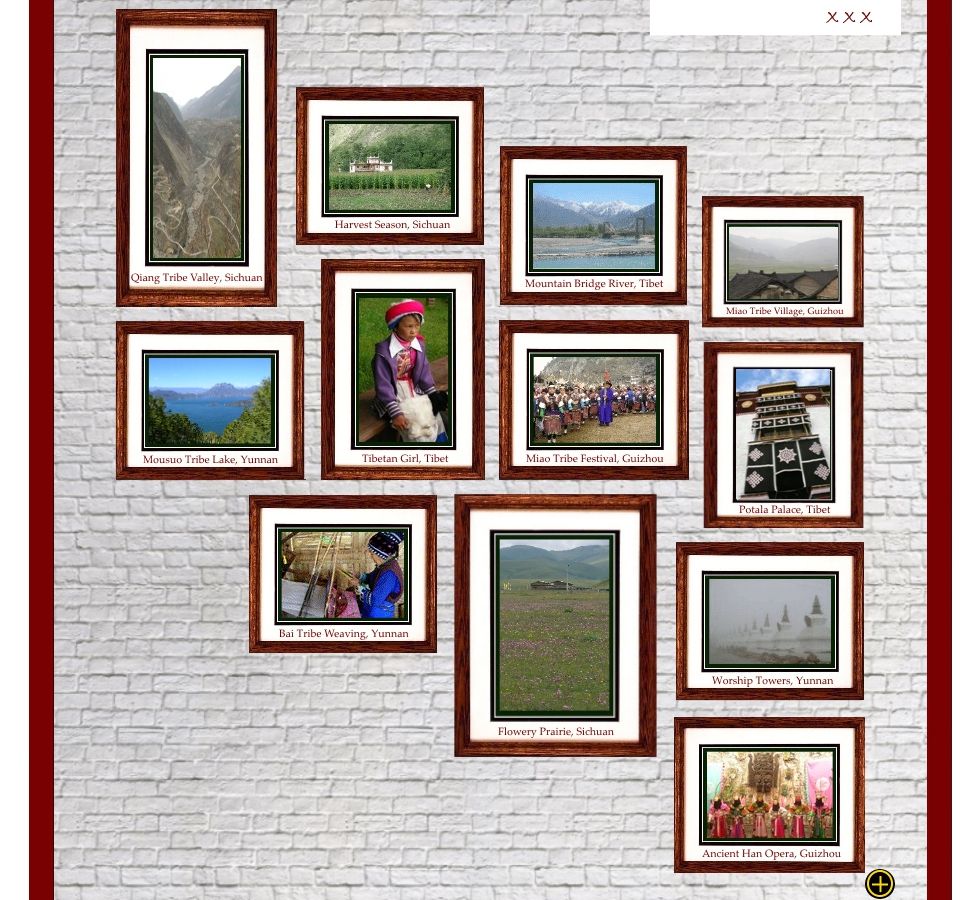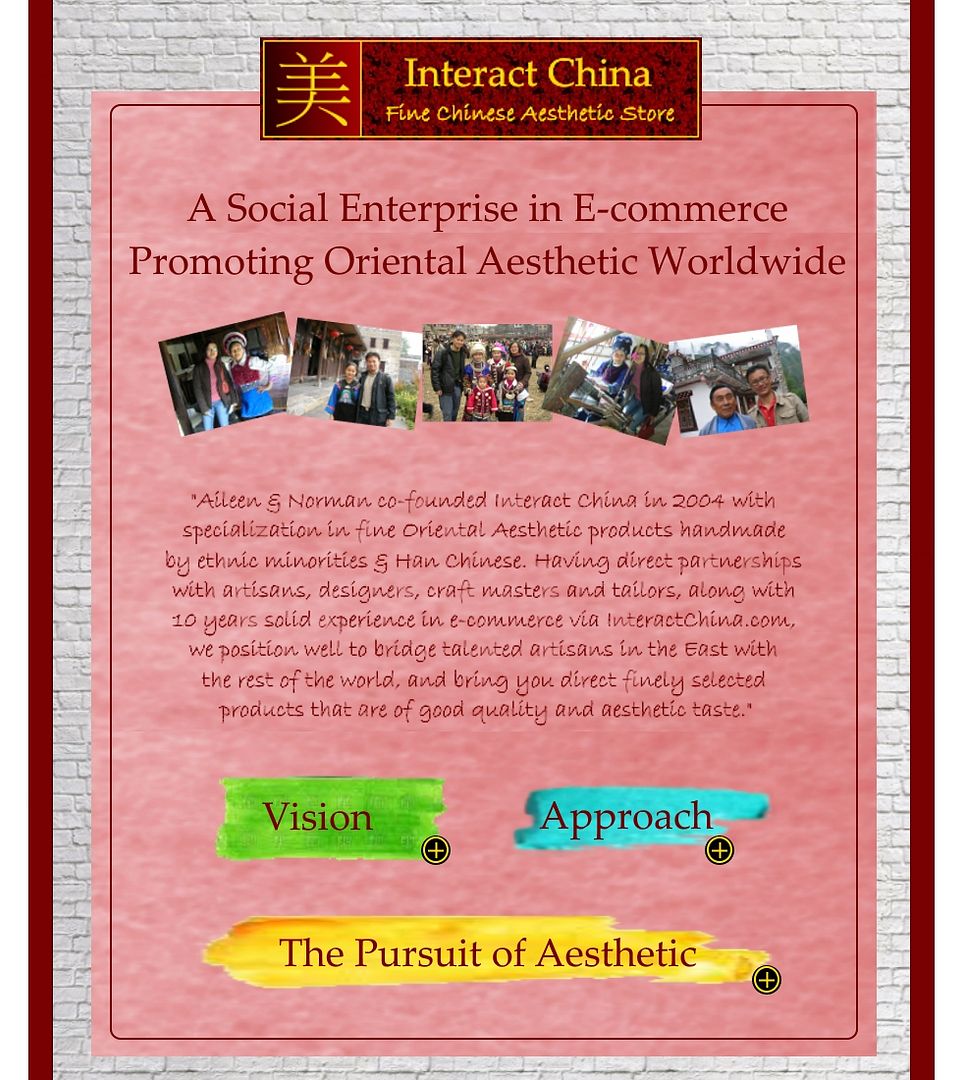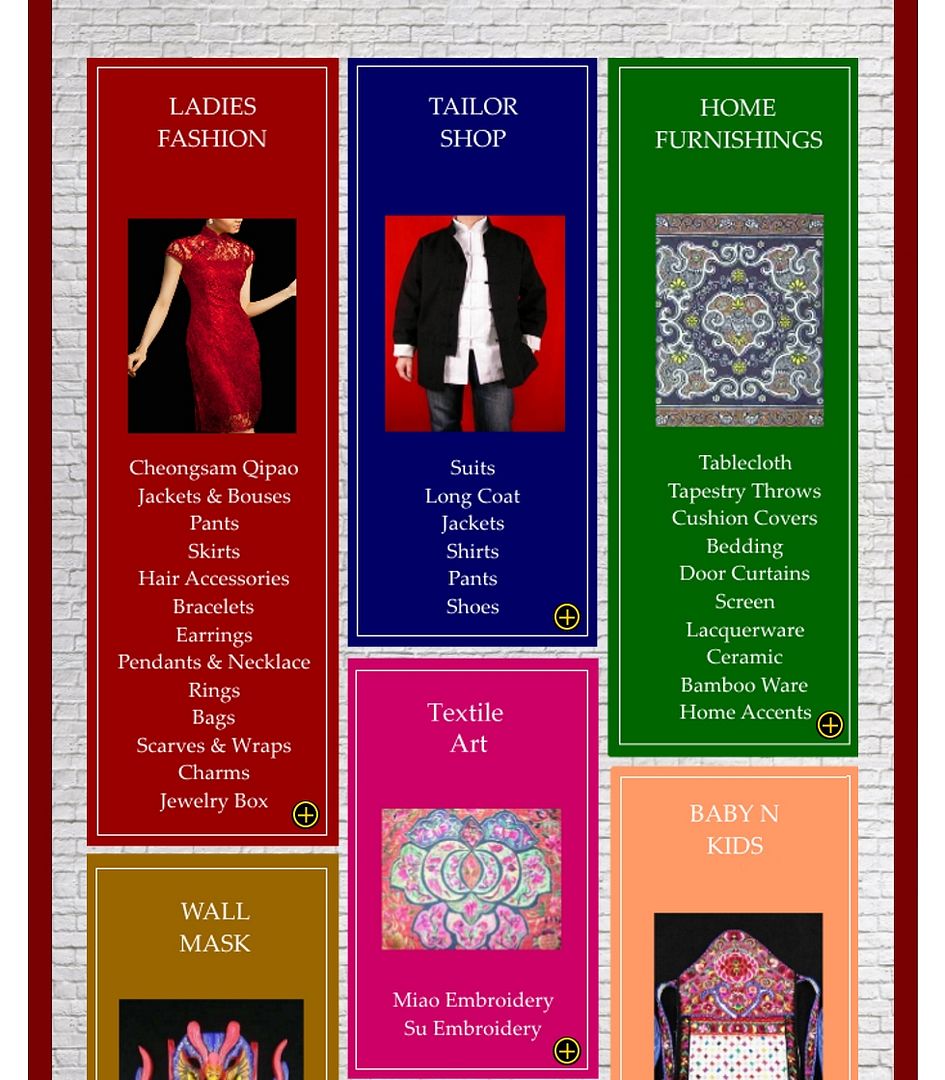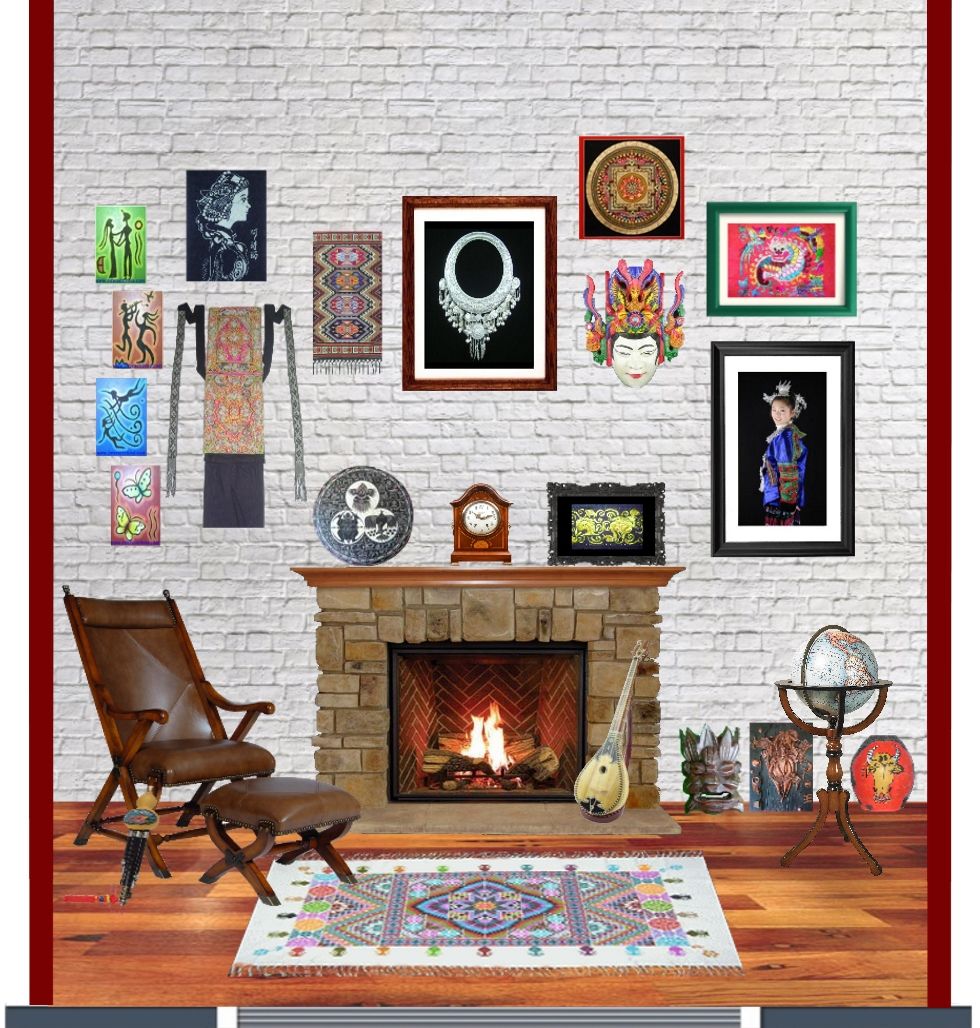Bai Ethnic Costume Simple But Elegant
5th Jun 2017
Bai people’s costume has a long history. During the Nanzhao Regime (738-937 AD) and the Dali Kingdom (937 -1253 AD), Bai people created their own styles of clothing. The clothes of the Bai people are bright and well-matching in colors, delicate and fine in embroideries, and plain and simple in style.
White is the favorite color of the Bai. They believe white represents dignity and high social status, and this can be seen in their clothing. It is typical for men to wear white outer upper garments and white trousers. Girls and women have more choices of colors. They like to wear white, light blue or pink outer upper garments and rosy, purple or black waistcoats.

The Bai enjoy their lives and love flowers. Bai clothing is usually adorned with camellia flowers because this flower is commonly see in Bai area and they view these flowers as a symbol of beauty. They like to wear a red scarf on their shoulders and a white outer upper garment, a combination that resembles blooming camellias. An unmarried girl always combs her hair into one pigtail, tied with a red string at its end, and then coils it over her head. She also likes to wear an apron with embroideries. In general, girls enjoy dressing up like beautiful camellia flowers.
Women Clothing
The clothes for young women of the Bai ethnic group mainly include the headdress, top garment, waistcoats, apron and pants. The top garment is usually white, yellow cream, lake blue or light green and the waistcoats are black or red, with silver dangling ornaments attached to the button area at the right. An embroidered or dark-colored apron is tied to the waist and a pair of blue or white pants is the usual lower garment. In some cases, the upper and lower garments are of the same color; in others, a different color is applied to the top garment, the waistcoat, the apron and the pants respectively. The multiple colors go perfectly well with one another.


In addition, the Bai women wear exquisite headdress that nicely match with their clothes. The headdresses worn by women in different areas have different features.

Figurines in the Shibaoshan Grottoes in Jianchuan County are lifelike, possessing both the common features of figure creation in China and the unique features of the Bai artists. The architectural group in the Jizushan Temple, with bow-shaped crossbeams, bracket-inserted columns, and gargoyles representing people, flowers and birds created with the open carving method, shows the excellent workmanship of the Bai people. The Bais also have high attainments in lacquer ware.
Men Clothing

Typical dresses for men of the Bai ethnic group include a white jacket, pants, leggings, straw sandals, and the outer black jacket with no sleeves and made of fine fabric like leather or silk. The whole set of costume, commonly known as three drops of water. A belt bag is tied to the waist and the pants are mostly black or blue.
by Xiao Xiao @ InteractChina.com
About Interact China
“A Social Enterprise in E-commerce Promoting Oriental Aesthetic Worldwide”
Aileen & Norman co-founded Interact China in 2004 with specialization in fine Oriental Aesthetic products handmade by ethnic minorities & Han Chinese. Having direct partnerships with artisans, designers, craft masters and tailors, along with 10 years solid experience in e-commerce via InteractChina.com, we position well to bridge talented artisans in the East with the rest of the world, and bring you direct finely selected products that are of good quality and aesthetic taste.
So far we carry 3000+ goods covering Ladies Fashion, Kungfu Clothing, Home Furnishings, Babies & Kids, Painting Arts, Textile Arts, Carving Arts, Tribal Jewelry Art, Wall Masks and Musical Instruments. Our team speak English, French, German, Spanish and Italian, and serve customers worldwide with passion and hearts.
P.S. We Need People with Similar Passion to Join Our Blogging Team!
If you have passion to write about Oriental Aesthetic in Fashion, Home Decor, Art & Crafts, Culture, Music, Books, and Charity, please contact us at bloggers@interactchina.com, we would love to hear from you!






